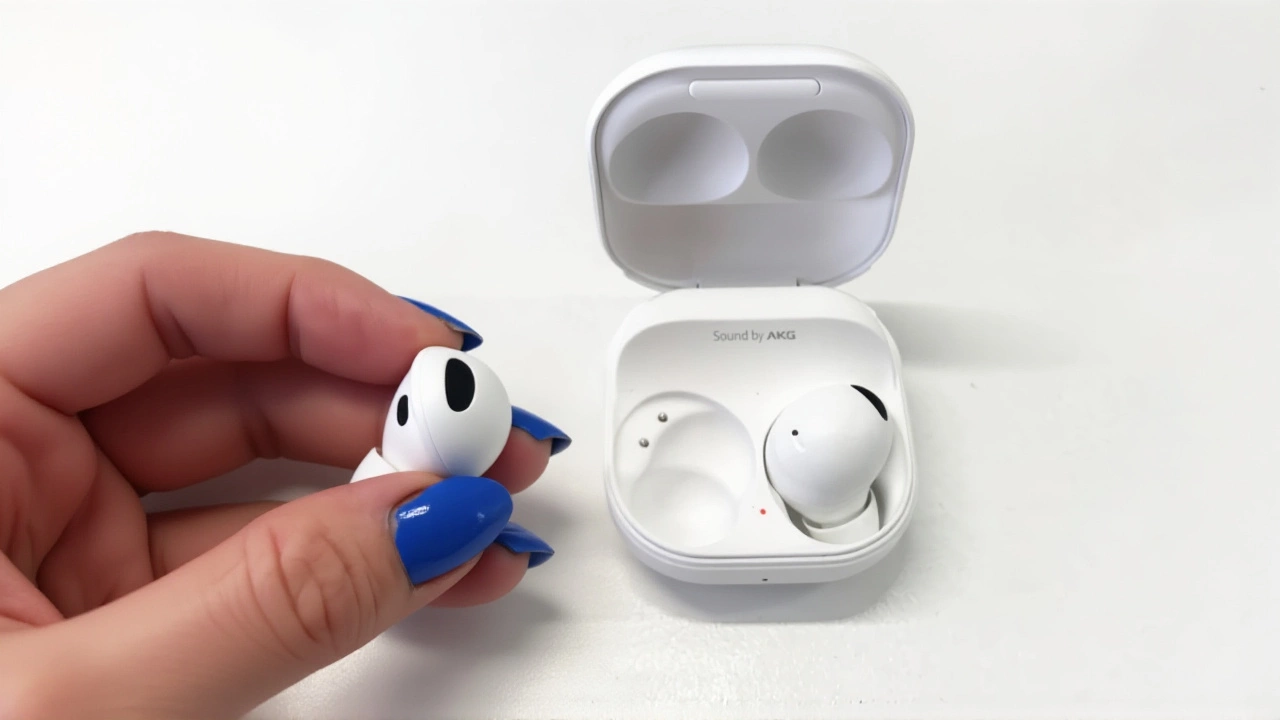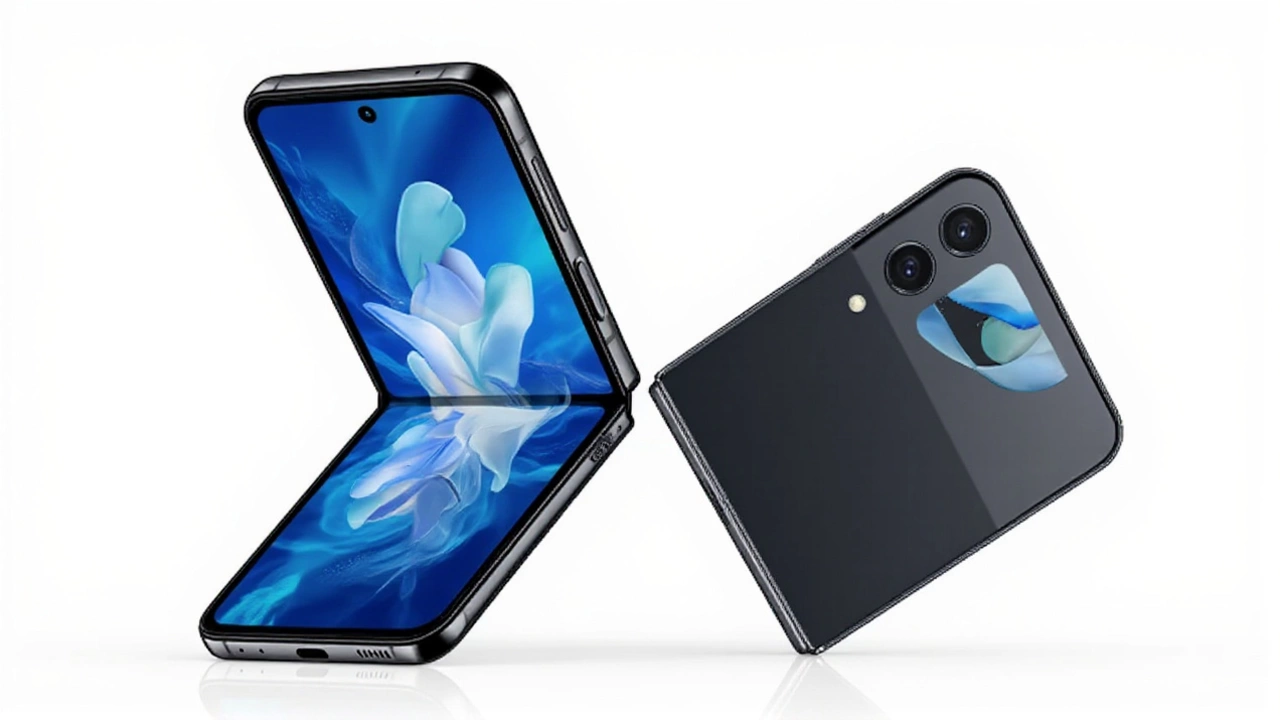On January 12, 2023, Samsung quietly slipped a game-changing feature into its flagship foldables: 360 Audio Recording, a spatial audio video capture tool that turns your Galaxy Z Flip 4 or Galaxy Z Fold 4 into a 3D sound recorder — but only if you’re wearing Galaxy Buds Pro 2. It’s not just a gimmick. This is the first real step in Samsung’s plan to own the future of immersive media — and it’s being built for Project Moohan, its upcoming extended reality headset designed to take on Apple’s Vision Pro.
How It Works — And Why It Needs Specific Earbuds
Unlike simple stereo recording, 360 Audio Recording captures sound from every direction — like your ears do. The Galaxy Buds Pro 2 act as tiny microphones, picking up ambient noise in real time while you film. That audio is then synced to your video, so when you watch a clip of your kid laughing in the backyard, you don’t just see it — you hear the wind rustle behind you, the neighbor’s dog bark to the left, and the ice cream truck jingle drifting in from the street.
But here’s the catch: it only works with the Buds Pro 2. Why? Because the feature relies on LE Audio, a newer Bluetooth standard that’s more efficient and supports higher fidelity than older codecs. Apple’s AirPods Pro 2, despite having Bluetooth 5.2, don’t support LE Audio at launch — a deliberate design choice that left them behind. Samsung, on the other hand, made the hardware and software work together from day one. The company’s official support page, ANS10003232, clarifies this isn’t about playback enhancement — it’s about recording. The "360 audio" setting in Bluetooth menus? That’s Dolby Atmos playback. The one in the Camera app? That’s spatial audio capture.
Expansion to S-Series and the S25 Push
By February 1, 2023, Samsung had already unveiled the Galaxy S23 series — and while it didn’t launch with the feature, its Bluetooth 5.2 hardware made it a natural fit. TechRadar predicted it then. And by February 21, 2025, PhoneArena confirmed what everyone suspected: the Galaxy S25 would get 360 Audio Recording via a Camera Assistant app update.
That update doesn’t just add a button — it transforms the camera app into a control hub. You can now adjust mic sensitivity, lock audio direction, and even mute background noise mid-recording. The feature is rolling out to older devices too — including the Galaxy S22 and Galaxy Z Fold 3 — as long as they have the right earbuds and updated firmware. It’s a classic Samsung play: extend functionality across its ecosystem without forcing users to buy new phones.

Project Moohan: The Real Reason Behind the Audio Push
Apple didn’t introduce spatial video recording on the iPhone 15 Pro just to make better YouTube clips. It was preparing for the Vision Pro. Samsung is doing the same — but smarter.
According to PhoneArena’s February 2025 report, Project Moohan is Samsung’s answer to Apple’s $3,500 headset. While Vision Pro sales disappointed, Samsung is betting on affordability — rumored to retail for under $1,000 — and deeper integration with its existing devices. Imagine watching a 360 Audio video on your Galaxy S25, then sliding it into your Moohan headset and feeling like you’re back in the room where it was filmed. That’s the vision.
And here’s the twist: Samsung isn’t waiting for consumers to adopt VR. It’s training them now — with every video you record on your phone.
Eclipsa Audio: Samsung’s Open-Source Counterattack
But Samsung isn’t just building hardware. It’s rewriting the rules of audio itself.
On January 7, 2025, Samsung and Google announced Eclipsa Audio, a free, open-source alternative to Dolby Atmos. Developed with THX and backed by the Alliance for Open Media, Eclipsa lets creators upload 3D audio to YouTube starting in 2025 — but only Samsung TVs and soundbars can play it back for now. It’s a bold move. Dolby Atmos requires licensing fees. Eclipsa doesn’t. Samsung’s previous push for HDR10+ over Dolby Vision paid off — now it’s doing the same with audio.
YouTube creators will soon have a new tool. And Samsung’s 2025 TVs? They’ll be the only ones that can truly experience it. That’s not just innovation — it’s ecosystem lock-in, done right.

What’s Next? The Immersive Media Race Is Just Starting
Apple’s Vision Pro flopped in part because it felt like a solution without a problem. Samsung’s approach is the opposite: it’s building the problem — and then the solution — together.
By making spatial audio recording available on nearly every Galaxy phone, training users to expect immersive sound, and then tying it to a low-cost XR headset, Samsung is creating a behavioral habit. You’ll record your vacation in 360 audio because it’s easy. You’ll watch it on your new TV because it sounds incredible. And when you finally get Moohan, you’ll feel like you’ve been preparing for this moment.
Meanwhile, Apple is scrambling to find apps that make Vision Pro useful. Samsung? It already has a library of millions of spatial videos — and it’s growing every day.
Frequently Asked Questions
Do I need Galaxy Buds Pro 2 to use 360 Audio Recording?
Yes — currently, only the Galaxy Buds Pro 2 support LE Audio and the dual-microphone setup required for spatial audio capture. Other Galaxy Buds models can play back spatial audio, but they can’t record it. Samsung hasn’t confirmed if future buds will support recording, but the hardware dependency makes it unlikely without a firmware overhaul.
Can I use this feature on older Galaxy phones like the S21?
No. The S21 and earlier models lack the necessary Bluetooth 5.2 implementation with LE Audio support required for spatial recording. While some software updates have added playback enhancements, the recording function is restricted to devices launched in 2022 and later, including the S22, Z Fold 4, and newer.
How is Eclipsa Audio different from Dolby Atmos?
Eclipsa Audio is open-source and royalty-free, while Dolby Atmos requires licensing fees for manufacturers and creators. Eclipsa also uses a more flexible codec structure, allowing better compression without quality loss. Samsung’s goal is to make 3D audio accessible to all — not just those who pay for proprietary tech.
Will Project Moohan work with non-Samsung phones?
Unlikely. Samsung is building a closed ecosystem — much like Apple. While Moohan may support basic Bluetooth pairing, full spatial video playback, app integration, and camera control will require Galaxy phones. The company is betting that users will upgrade their phones to unlock the headset experience.
Why didn’t Apple do this sooner?
Apple prioritized hardware integration over ecosystem-wide adoption. While the iPhone 15 Pro added spatial video, Apple didn’t make it easy for users to record or share it. Samsung is doing the opposite: pushing the feature across devices, apps, and platforms — turning every user into a content creator for its future headset.
Is 360 Audio Recording useful for everyday users?
Absolutely. Think of it like HDR for sound. A video of your child’s first steps, a concert in the park, or even a quiet dinner with friends becomes more emotional when you hear the ambient details — the clink of glasses, the rustle of a blanket, birdsong fading in the distance. It’s not just for tech enthusiasts. It’s for anyone who wants memories to feel real.
